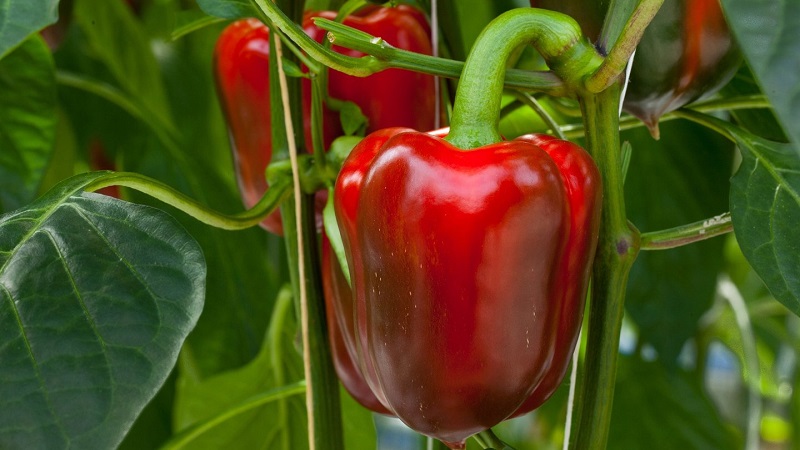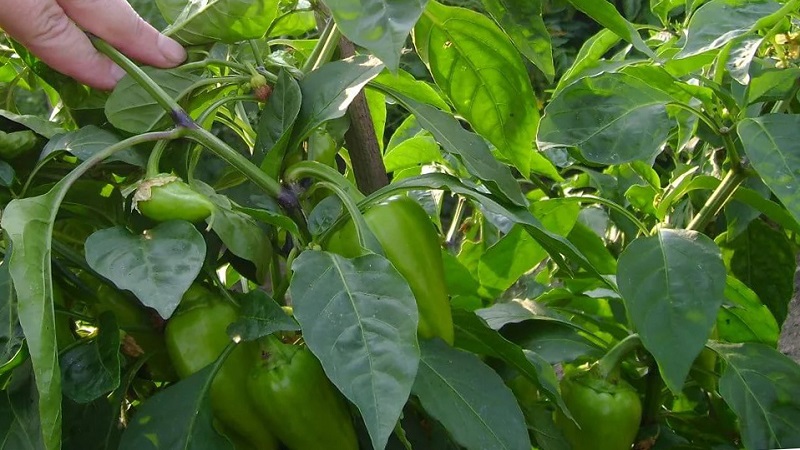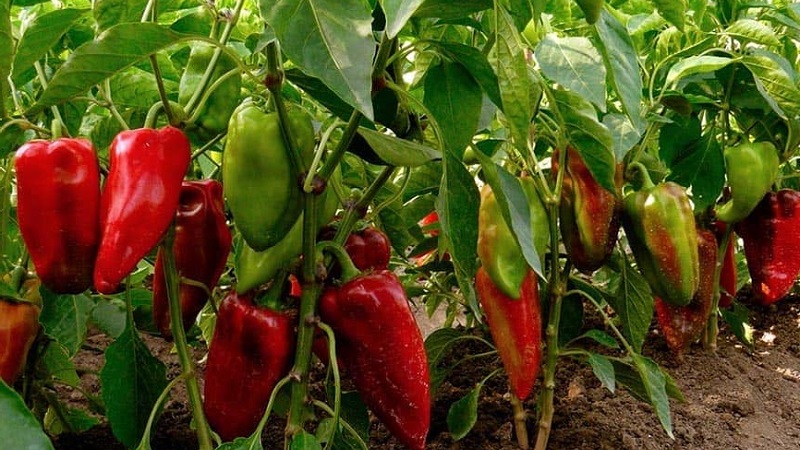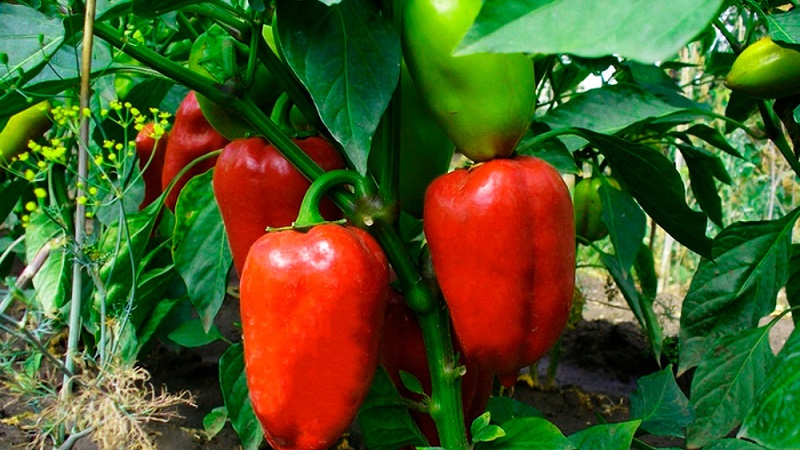How to accelerate the ripening of peppers in a greenhouse: the best ways and life hacks for experienced summer residents
Pepper is a heat-loving plant, therefore it grows in open ground only in the southern regions. In regions with cold climates, it is cultivated in greenhouses or greenhouses. But often in greenhouses, gardeners are forced to take measures to accelerate the ripening of fruits.
The content of the article
Types of ripeness of pepper
The ripeness of pepper can be of two types: technical and biological. Harvesting is possible both in technical and biological maturity.

Technical ripeness
The stage of technical ripeness - the state of the fruits when they have reached normal size, but not ripe... The color is dark green, white or yellowish. Such peppers are harvested for storage, sale or transportation. Fruits harvested at technical ripeness can be stored for up to two months and gradually ripen.
Biological ripeness
Biological ripeness is an analogue of reproductive maturitywhen the seeds complete their development cycle. Fruits become brightly colored - red, yellow, orange, black, etc., depending on the variety. Pepper is not stored for a long time in this state.
Bitter pepper is harvested only when full biological ripeness.
Fruits are harvested every 4-5 daysso that the yield does not decrease.
Reference! Pepper is a perennial plant. If transplanted into a flowerpot at the end of the season, it will bear fruit until December. Then it will go into a state of rest, and from February it will again begin to actively grow.

Ways to help speed up the ripening of peppers
To get a good harvest of ripe fruits, care must be taken to ensure that all conditions are met at the earliest stages of plant development.
Agrotechnical techniques
Agricultural rules will help get a good harvest of juicy fruits:
- Seeds... Pepper seeds are difficult to swell and germinate after two weeks. To speed up the process, you can soak the seeds in growth accelerators such as "Narcissus", "Zircon", "Epin extra", "Energen". Plants do not tolerate transplanting at an early age, so it is recommended to plant the seeds immediately deeper, 4-5 cm.
- Temperature... You can only plant seedlings in warm soil. The air temperature must not drop below 14 ° C. Make sure there are no large fluctuations between day and night temperatures. For this, it is better to plant the culture in low greenhouses or greenhouses, where the temperature is more stable, there are no sharp fluctuations.
- Lighting... For pepper, light is important, choose a sunny place. It is not recommended to thicken the plantings; it is necessary to maintain a distance between plants of at least 30 cm so that each bush is evenly illuminated.
- The soil... The culture loves fertile light soil. Apply organic fertilizer before planting. Seedlings also need regular feeding, starting from the appearance of the first leaf. The soil must be regularly loosened shallowly for better aeration.
- Watering... Pepper is watered only with warm water! In normal weather, plants in the greenhouse are watered 1-2 times a week at the rate of 1-2 liters of water per bush. In hot weather, with a decrease in humidity, peppers in the greenhouse are watered twice a day: once under the root (1 liter) and the second time by sprinkling with cool water (500 ml per bush).
- Crown formation... The first bud is immediately removed so that the side shoots go. For the development of the plant, 2-3 shoots are enough. Barren flowers must be removed during the period of mass flowering, and at the end of summer - all flowers.With the onset of cold weather, they collect all the small peppers, they still will not ripen anymore. The lower shoots are removed along with the foliage, they consume food, and there will be no fruit on them.
It can be useful:
Why does pepper wither in the open field

Traditional methods
The gardeners are trying accelerate the ripening of fruits with little tricks:
- In heated greenhouses, the crop ripens a month earlier, and the fruiting period is extended.
- Hot watering, 40-60 ° C during the cold season.
- Airing the greenhouse. To prevent condensation from forming due to the difference between night and day temperatures, it is necessary to close the greenhouse at night and keep it open during the day.
- Foliar feeding of the ground part of the plant. Periodically, summer residents spray the leaves with ash infusion (two glasses per 10 liters of water).
- Harvesting. To save nutrients, the fruits are removed at the stage of technical ripeness. They are placed in a dark place: in 2-3 days you will have ripe, multi-colored peppers.
Important! The bushes are watered in the evening, three hours before sunset.
Life hacks of experienced summer residents
Here are a few tricksthat experienced gardeners use to speed up the ripening of peppers:
- Planting seedlings in insulated soil. Dry hay, foliage, and not rotted compost are used as biofuel.
- Various additives to the hole when planting. Banana peels, ash, crushed eggshells, hay and even bird feathers are added to the hole. Do not forget about mineral fertilizers - dolomite flour or potassium without chlorine.
- Infusion of weeds for fertilization. An infusion of nettle gives a good effect. Half a 10-liter bucket of herbs is poured with water, insisted for a week. Then dilute a glass of infusion in 10 liters of water.
- Fertilization with "mash", which is prepared from 3 liters of water, a glass of sugar, 100 g of yeast, 2-3 raw grated potatoes. Then this infusion is diluted with water in a ratio of 1:10.
- Poultry manure is used as fertilizer.
- You can reduce the frequency of watering using a hydrogel. To do this, when planting seedlings, in addition to the additives listed above, pour 1 liter of hot water and half a glass of "jelly" made from hydrogel into the hole, and plant the plant directly on it.
Reference. A hydrogel is a substance that absorbs moisture in order to further feed it a plant.

How to speed up the ripening of sweet and hot peppers
Agrotechnics of bitter and sweet pepper are the same... For the peppers to ripen quickly, bush formation is critical. It is necessary to pinch the top of the plant, as well as remove the side shoots. Pinch hot peppers when they reach a height of 25 cm.
You can also use this technique.: on a high stem, using a knife or blade, make a through longitudinal incision, departing from the soil 15 cm. The length of the incision is about 10 cm. Insert a chip 4-5 mm thick into this incision. Then the plant will direct all the nutrients to the fruit.
Read also:
In the greenhouse / in the open field
We described above how to speed up the ripening of peppers in a greenhouse. Let's dwell on the features of open ground... After transplanting, the plants are covered with non-woven material. And it is better to leave them under it for the entire growing season. In the afternoon (weather permitting), the covering material is removed.
In the open field, peppers are rarely watered, but abundantly. After watering, the soil is loosened and mulched with 5 cm high compost. This retains moisture and increases soil fertility.
Pruning the bush is just as important as growing in a greenhouse.... Supports for fruiting branches may be required.

In the open field, feeding plays an equally important role to accelerate ripening. We use the same infusions, ash, mineral fertilizers.
Attention! Foliar dressing takes effect after a few hours, so in the morning the plants are sprayed with clean water to avoid burns.
It is also important to observe crop rotation to increase yields... And in a greenhouse after harvesting, it is advisable to remove 15 cm of soil and replace it with a mixture of peat and sand in a 1: 1 ratio.
Conclusion
To accelerate the ripening of peppers, it is enough to competently redistribute the plant's forces in the right directions. To do this, we use a complex of agrotechnical techniques and provide plants with comfortable conditions for development.